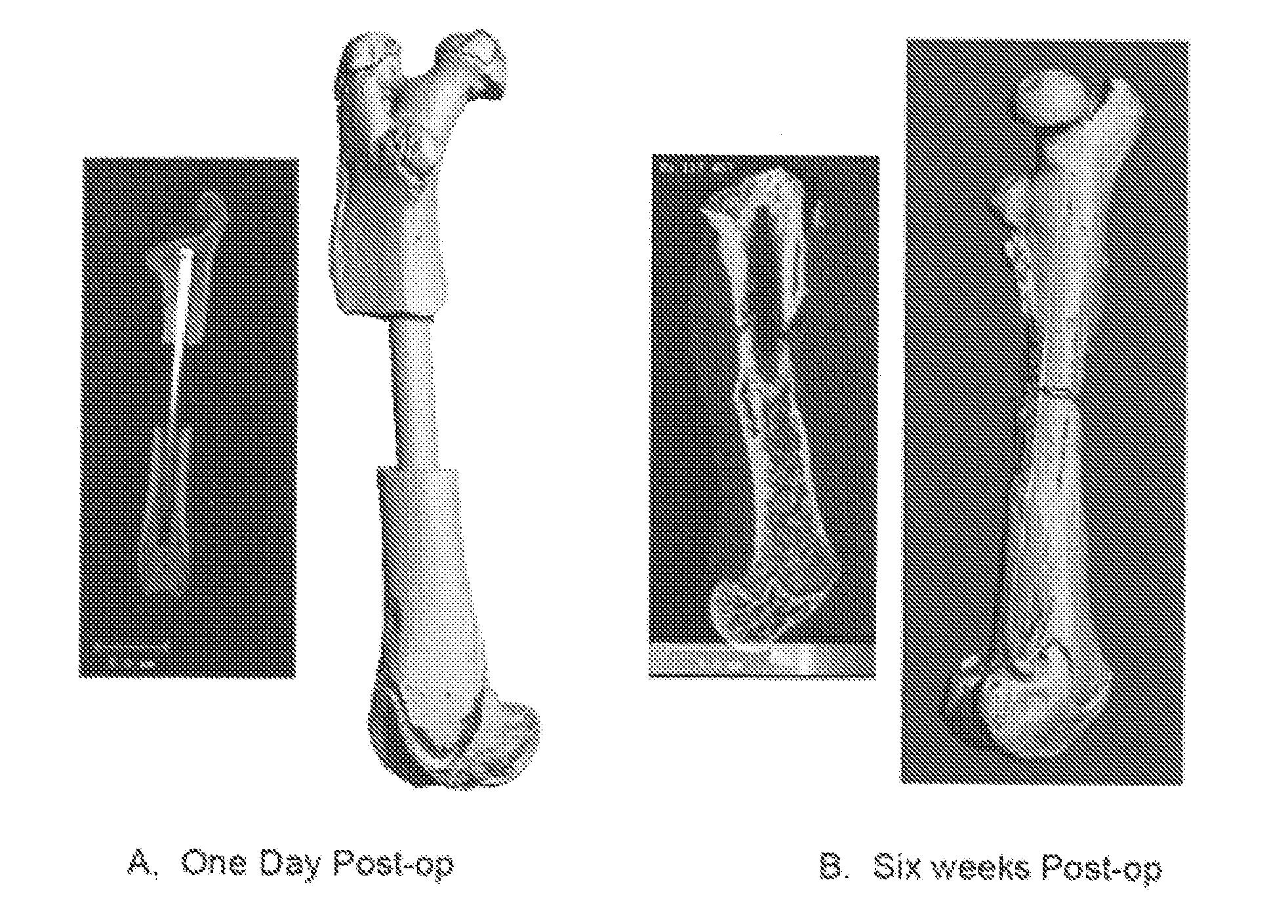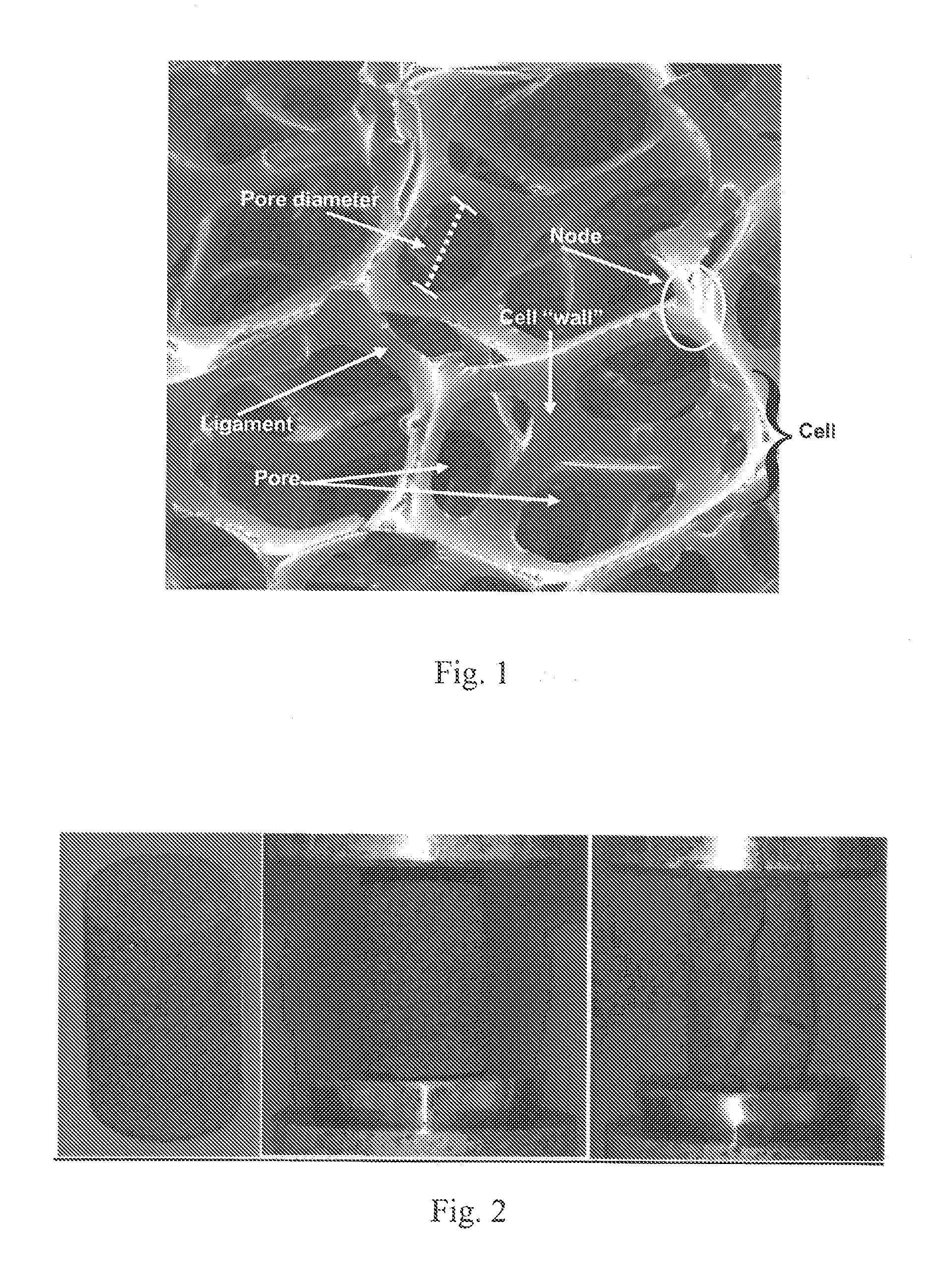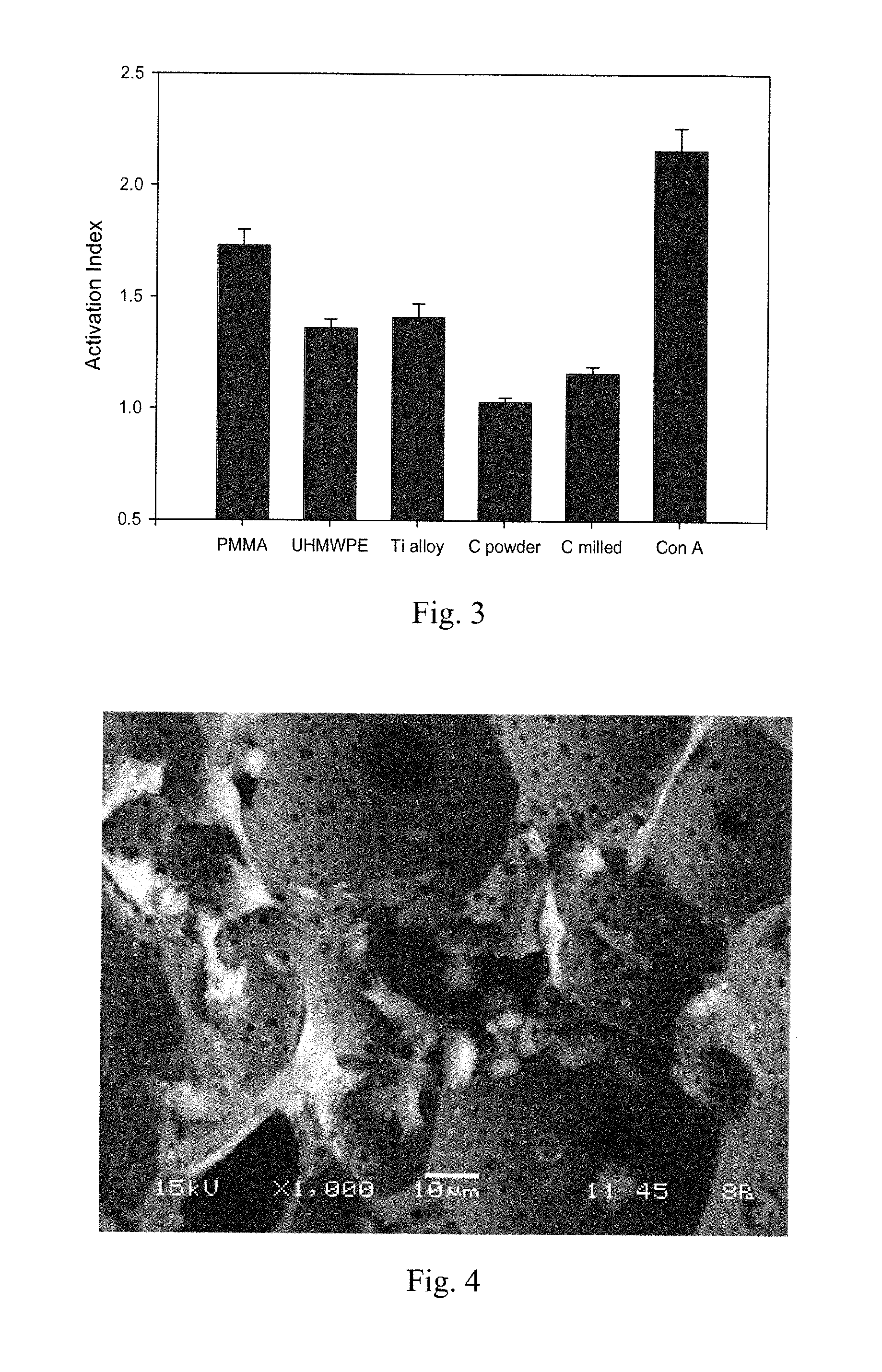Synthetic bone grafts constructed from carbon foam materials
a carbon foam and synthetic bone technology, applied in the field of structural bone void fillers, can solve the problems of insufficient autologous bone available as a void filler, high failure rate, secondary trauma to the patient,
- Summary
- Abstract
- Description
- Claims
- Application Information
AI Technical Summary
Benefits of technology
Problems solved by technology
Method used
Image
Examples
example 1
Initial Biornaterial Analysis for Mechanical Properties
[0061]Extensive studies into the development ofbiomaterials with a particular focus upon bone and nerve grafting using tissue engineered scaffolds were previously carried out on poly-epsilon-caprolactone-hydroxyapatite (PCL-HA) composites and chitosan-collagen composites. A number of model systems for the evaluation of bone biocompatibility were also developed previously. A novel PCL-HA composite was developed to promote vascularization of the bone graft substitute, as PCL has been approved by the FDA for use in medical and drug delivery devices, and studies have demonstrated its biocompatibility. However, its structural properties proved to be less than ideal for use as a bone void filler, and its degradation and resorption rates were too rapid to provide structural support during bone ingrowth. Thus, a series of preliminary studies were carried out on carbon foam scaffolds for bone grafting and regeneration.
[0062]Mechanical te...
example 2
In Vitro Biocompatibility of Carbon Foam
1. Initial Testing
[0064]Initial biocompatibility of carbon foam was conducted using a cell culture system developed in our laboratory for the evaluation of patient hypersensitivity to orthopaedic biomaterials. Carbon in both powdered and milled fiber forms was evaluated using mononuclear cells (MNCs) obtained from 40 osteoarthritic patients under investigation for biomaterial sensitivity, along with other conventional biomaterials (polymethylmethacrylate (PMMA), Ti alloy, ultra-high-molecular-weight polyethylene (UHMWPE)). Peripheral blood was obtained from patients and MNCs were separated using Histopaque gradients. Cell suspensions of 2.5×106 cells were dispensed into wells containing various concentrations of biomaterial particles. Wells with no particles (negative control) or with Concanavalin A (ConA) (positive control) were also included on the plate. Plates were incubated for 6 days. Next, 20 μl of MTT solution (5 mg / ml) were then to ea...
example 3
In Vivo Biocompatibility of Carbon Foam
[0067]Initial in vivo testing of carbon foam scaffolds was carried out to further evaluate the material for biocompatibility and determine if cellular ingrowth within the porous structure could be readily achieved. Two forms of carbon (DUOCEL®) with widely disparate structural properties were selected for testing: (1) A closed cell carbon foam (pore size ˜120 μm); and (2) An open cell carbon foam (pore size ˜1 mm). Initial testing was conducted using a previously-developed murine air pouch implantation model (Wooley et al. Inflammatory responses to orthopaedic biomaterials in the murine air pouch. Biomaterials 2002; 23:517-526; and Ottaviani et al. Inflammatory and immunological responses to hyaluronan preparations. Study of a murine biocompatibility model. J Bone Joint Surg Am 2007; 89(1):148-157).
[0068]Balb / c mice weighing 20-25 g were divided into two implantation groups, and air pouches were established 6 days before carbon foam implantatio...
PUM
| Property | Measurement | Unit |
|---|---|---|
| Fraction | aaaaa | aaaaa |
| Time | aaaaa | aaaaa |
| Time | aaaaa | aaaaa |
Abstract
Description
Claims
Application Information
 Login to View More
Login to View More - R&D
- Intellectual Property
- Life Sciences
- Materials
- Tech Scout
- Unparalleled Data Quality
- Higher Quality Content
- 60% Fewer Hallucinations
Browse by: Latest US Patents, China's latest patents, Technical Efficacy Thesaurus, Application Domain, Technology Topic, Popular Technical Reports.
© 2025 PatSnap. All rights reserved.Legal|Privacy policy|Modern Slavery Act Transparency Statement|Sitemap|About US| Contact US: help@patsnap.com



